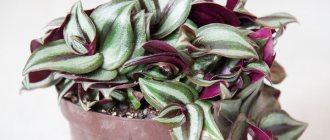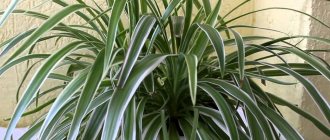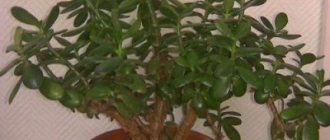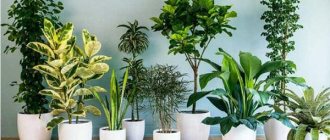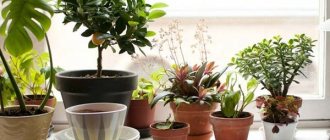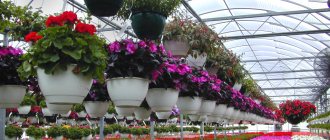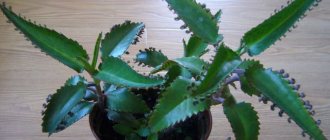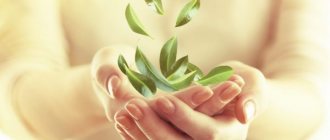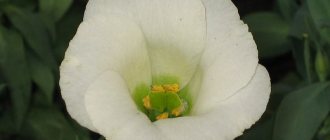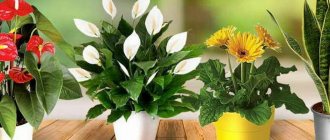Introducing the review: “Watering indoor plants.” We'll tell you how often you need to water indoor plants, how best to do it, and much more. Also see in a separate article what water to water indoor plants for better development.
ADDITIONS TO THE ARTICLE:
1. WHAT WATER IS NEEDED FOR WATERING HOUSEPLANTS? HARDNESS, TEMPERATURE, ETC.
2. HOW TO WATER HOUSE PLANTS? REVIEW OF IRRIGATION METHODS!
3. HOW TO WATER PLANTS AND FLOWERS DURING A VACATION OR BUSINESS TRIP?
Watering indoor plants in spring, summer, autumn or winter
Watering indoor plants and flowers is one of the main factors for their growth and development.
Therefore, every gardener should know how to water indoor plants and flowers so that they give us their beauty and benefit.
Proper watering of indoor flowers and plants includes several aspects: frequency, quantity, quality and temperature of water.
We will offer general recommendations for watering plants and flowers and explain in detail some of the subtleties.
Different types of indoor flowers and plants require different watering schedules, but many of the tips can be applied in most cases.
WHEN IS IT BETTER TO WATER HOUSE PLANTS AND FLOWERS?
In order to understand when to water indoor plants and flowers, you need to know their water needs, physiological state and external growing conditions.
- The frequency of watering is influenced by the following factors: light intensity, temperature and humidity of the air and soil substrate, as well as its moisture capacity, and the size of the pot.
Watering indoor plants and flowers depends significantly on the time of year.
- In spring and summer there is a phase of active growth and development and the need for water is maximum.
- In autumn, plants are prepared and reorganized for a period of dormancy or flowering, and the amount of moisture is gradually reduced.
- In winter, the need for water becomes even lower.
GENERAL RULE from the Flower Festival magazine: the frequency of watering increases along with an increase in the brightness and duration of lighting, air temperature and a decrease in humidity.
STAGES OF DEVELOPMENT OF A HOUSEPLANT OR FLOWER
Regardless of the time of year, when a plant is actively growing and blooming, it needs an increased amount of moisture. During the dormant period, on the contrary, they reduce the amount and frequency of watering.
- In addition, the characteristics of indoor plant species, such as the power of the root system and the structure of above-ground organs, are of great importance.
For example, houseplants with large soft leaves (calathea, spathiphyllum) and a large number of leaves need more frequent watering.
Plants with thick leaves (aloe, kalanchoe), hard leathery leaves or with a waxy coating, cacti need less water because they can store water.
And bulbous plants do not tolerate excess moisture well.
AN IMPORTANT FACTOR IS THE AGE OF THE PLANT
The root system of young plants is less developed than that of adults. It is better to water young plants often and little by little, and older plants less often, but more abundantly.
- Therefore, the watering regime is constantly changing and it is difficult to calculate how many times a year you need to water indoor plants. Knowledge and experience are the best assistants of every gardener.
POT MATERIAL AND SIZE
The smaller the plant and the larger the pot, the less often it is watered. A small indoor plant uses little water, but a large pot requires more than a small one.
A small sprout or a large plant in a small container, on the contrary, needs to be watered more often.
- It is recommended to immediately plant the plant in a pot proportional to the size of its root system.
If the root system takes up a lot of space in the pot and there is little soil substrate in it, then such a plant needs to be watered more often.
It is recommended to water plants and flowers in ceramic and clay pots more often than in plastic ones, as the clay soaks in faster and evaporates moisture.
.
Oxalis Iron Cross
.
WHAT IS THE BEST TRAY TO USE FOR A FLOWER POT?
Most often, pots for indoor flowers come with a tray, because this is an indispensable thing for draining excess water. If a tray is not included in the set, you can use various saucers or bowls instead.
- The diameter of the tray should be no less than the diameter of the top of the pot.
How do you know when to water a houseplant?
Experts sometimes offer their own methods for determining the moisture needs of plants: weighing (wet soil is heavy) or tapping the pot (a booming sound is heard when the substrate is dry).
- However, experts believe that these methods do not always accurately reflect the situation or are convenient to use.
Therefore, most often gardeners are guided by knowledge of the species’ water needs, external conditions and their own experience.
As a rule, you develop your own watering system for indoor plants and flowers. It may look something like this: spring-summer - every other day, autumn - every three to four days, winter - once every 7-10 days.
“Festival of Flowers” warns: many years of experience of specialists shows that indoor plants and flowers more often suffer from waterlogging than from lack of water.
Therefore, familiarize yourself with the general principles of watering plants, as well as the water needs of your pets.
WHEN SHOULD HOUSEPLANTS BE WATERED MORE FREQUENTLY, AND WHEN SHOULD BE WATERED LESS?
MORE OFTEN:
- summer heat
- bright lighting and dry air
- high air temperature with low humidity in winter
- plant with a strong root system
- active growth phase
- plants with a lot of green mass (many or large leaves)
- plants in small pots
- plants in pots with plenty of drainage
- plants in clay pots
- plants during flowering (exception: flowering during the dormant period (orchid, etc.)).
RARELY:
- plants with thick stems
- plants in cool and damp areas
- plants with weak root systems
- plants with fleshy leaves or a waxy coating
- stem or bulb
- pot without drainage and drainage holes
- plants during the dormant period.
How to determine moisture deficiency or excess?
LACK OF WATER: leaves begin to wither or dry out and fall off. In flowering plants, buds and flowers wither and fall off. Cracks on the surface of the substrate.
EXCESS WATER: leaves become lethargic, grow poorly, begin to rot and turn brown at the edges, and later fall off, soft roots. Then mold appears on the substrate, and a gray coating appears on the stem and flowers.
- IMPORTANT: The leaves of a plant or flower droop from either a lack or an excess of moisture.
The difference is that with a lack of water after watering, the leaves of the plant become elastic.
.
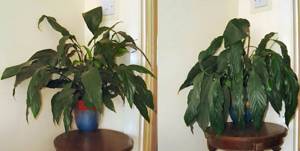
Spathiphyllum in normal condition and with moisture deficiency.
.
How to water indoor plants correctly?
In order for flowers in pots to grow attractive, they need to be taken care of. An important part of caring for indoor flowers is maintaining moist soil in the flowerpot. Regular watering of indoor plants is the basis for their good prosperity. Errors caused by improper irrigation can be a common cause of plant death. When there is not enough water, the flowers become more lethargic, weaker and fade over time.
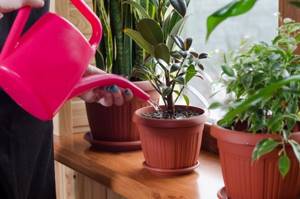
Watering indoor flowers
How to water indoor flowers correctly?
Watering potted plants grown at home or in the office is the basis of their care. How to water indoor plants?
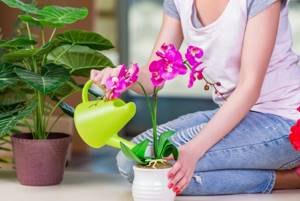
This process is carried out throughout the year. None of the care conditions when growing plants requires as much attention as watering. This is where houseplant lovers begin to make most mistakes: overwatering them, or forgetting that they need water. As a result, the plant receives too much water or too little - either way the plant may die.
What determines a plant's need for water? Each plant has its own watering requirements, depending on plant size, pot size, time of year, temperature and light, soil quality and species-specific moisture requirements. For example, on cloudy days the plant needs less moisture, and on hot days more water. Plants need a lot of watering during the warm summer months, but less watering during cold weather.
When watering, you must follow some rules so as not to harm indoor plants and this can help preserve the plants.
- Water indoor plants when the soil is light and pours out of the pot.
- Most plants are watered from above, only some exclusively from below.
- Always use water at room temperature for irrigation. If the water is too cold it will cause the leaves to curl.
- It is advisable to water the plants with soft water. Tap water should sit for several hours before watering so that the chlorine evaporates and the calcium settles to the bottom of the dish.
- More often, plants are watered when the air is dry and warm, if they are placed in bright and sunny places.
- Water less frequently at high humidity, low temperatures, and in poorly lit habitats.
- Water flowers more often in summer (usually every day or every other day) - less often in winter.
- Do not leave excess water under the pan. In winter, it is drained immediately so that the roots do not begin to rot. In summer - after two to three hours. Flowers suffer more from wetness than from drought.
Note! During the growing season, the soil in the flowerpot is intensively watered. A small amount of water only moistens the top layer of soil and does not reach the fine roots in the pot.
Always add enough water to wet the entire contents of the container. After each watering, the substrate should remain moist, but not wet. Care must be taken to allow the top soil to dry out a little between each watering.
Various watering requirements of indoor plants
Individual houseplants usually have different humidity requirements. Some are satisfied with a minimum amount of water (cacti, succulents), while others, on the contrary, require a constantly slightly moistened substrate (ferns, bromeliads). Larger plants and plants with large leaves, which allow water to evaporate faster, need more water.
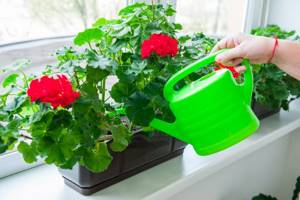
How do you know how much water you need? Houseplants require more moisture at planting time and during flowering. After flowering, they are watered less.
Important! Lack of watering during flowering can cause flower buds to dry out.
A plant's water consumption is proportional to the surface area of its leaves (the more leaves, the more water the plant needs).
Additional Information!
Plants that produce many large leaves need to be watered more deeply because their leaves evaporate more water than houseplants with small leaves.
Most plants can withstand the dry season relatively well (if you accidentally forget to water them), but they die from overwatering. Therefore, make a rule that it is better to water less than too much.
It should be remembered that too much water can harm potted plants much more than not enough water. You can prevent root rot by creating a drainage layer of expanded clay at the bottom of each pot. These porous baked clay balls prevent moisture from accumulating around plant roots. Pour expanded clay onto the bottom of the flowerpot, approximately 3 to 5 cm (depending on the size of the pot) and cover it with a layer of substrate.
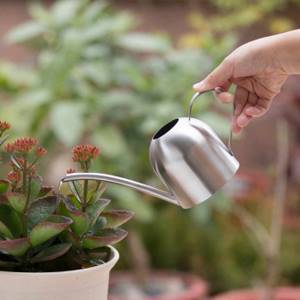
Plant species that have thick, fleshy leaves should be watered less. Too much water harms them more than not enough.
These flowers include succulents, a special type of plant that accumulates water in succulent, fleshy leaves or stems and consumes it carefully. Water-tolerant succulents have the ability to store water in their tissues, do not require intensive watering, and live much longer without water than plants with thin leaves.
Watering also depends on the humidity and temperature in the room where the plant is installed - the warmer and drier it is, the more water the plant needs. Indoor plants that are kept in a room with higher humidity (such as the kitchen or bathroom) will withstand longer breaks in watering than those that are kept in a sunny living room or heated room.
The frequency of watering also depends on the volume and properties of the substrate in the pot: plants growing in large containers and humus soil need less watering than those grown in small pots and sandy substrate.
The pot itself also plays a role. In a small flowerpot, the soil dries out faster than in a large one. The material of the flowerpot itself also matters. Those made from baked clay themselves absorb some of the moisture, so plants planted in them require more watering than plants in a plastic pot. A substrate that contains sand absorbs water much better. This means watering more frequently because the water in such a substrate will dry out faster.
The time of year is also important. Individual plants have different moisture requirements throughout the year. Most plants use more water in the spring and summer when they are growing. The dose of water for irrigation in autumn and winter is reduced. However, there are exceptions. Some species experience a dormant period in the summer, when watering is significantly reduced or stopped altogether. Some should be drier in the fall when they create flower buds, but once they form and during flowering they already have a higher water use.
Irrigation mode
The main irrigation is best done in the first half of the day. Each type of plant needs its own watering regime. There are abundant, soft and infrequent watering. Abundant watering is carried out immediately after the earthen clod dries. Most tropical plants with thin leaves require heavy irrigation. With moderate watering, plants are not watered immediately after the earthen ball has dried, but after one or two days.
Light watering is especially necessary for plants with pubescent leaves and stems (African violet, peperomia, etc.). Rare watering applies to cacti and succulents, as well as plants during the dormant period.
What are the symptoms of water shortage? Regular irregularities in watering affect the appearance of most plants. You can notice a lack of water by the following signs:
- leaves and shoots become sluggish;
- leaves fall off and become dry on plants with hard, leathery leaves;
- flowers and buds dry out quickly.
What are the consequences of improper watering with excess water:
- mold appears on buds and flowers, on leaves;
- the plant grows more slowly;
- the tips of the leaves turn brown;
- old and young leaves fall off.
It should be remembered that cold water can damage the roots and leaves of heat-loving tropical plants.
Is it better to water from above or into a tray?
The most common method of watering is from above. The substrate is moistened faster, and nutrients reach the roots. Many plants have very small leaves and stems that become stained by water droplets. In addition, water droplets focus like lenses in the light and can cause burns on the leaves. Therefore, when watering from above, it is necessary to lift or move the leaves to the side so that the water falls only on the ground.
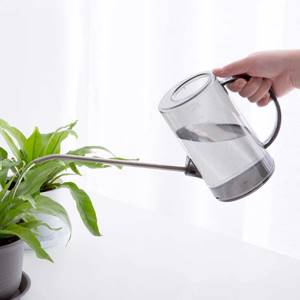
Many plants do not tolerate water on their leaves, so it is better to pour them from below - into a bowl. These include African violet, cyclamen or allocasia. A typical plant that needs to be watered from below is the Saintpaulia (African violet). However, if overwatered, its roots and leaves may rot. Epiphytes and orchids are best immersed in water.
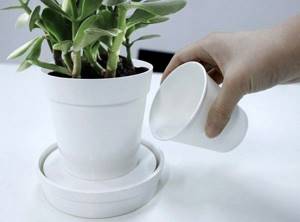
How do you know when a flower needs to be watered?
It's time to water the plant when the soil mixture in the pot dries out. The only problem is that a mixture that seems dry on top may still be wet in the middle of the pot.
For small pots, you can assume that if the mixture is dry on the surface, it will dry completely throughout the container.
Deciding when to water your plant is best done by checking the moisture content of the potting medium.
The easiest way to tell if a plant needs watering is to test the soil in the pot with your finger or a wooden stick. If the soil is moist, there is no need to water.
You can determine whether your plants should be watered simply by tapping the pot with your finger. If the soil in the pot is dry, the sound will be loud; if it is wet, the sound will be dull.
If the plant withers and its leaves turn yellow, it may dry out. It is worth immersing the flower in a large container of water for several hours so that the entire root ball is absorbed with moisture. If a houseplant does not move away even after thorough watering, this means that the roots are already beginning to rot. Sometimes wilting and yellowing of leaves appears during the winter months when there should be a dormant period. If the plant is healthy, yellowing of its leaves in winter is natural.
How often do you water flowers at home?
The intensity of watering should correspond to the season and ambient temperature. In colder rooms, it is necessary to water less to avoid prolonged wetting of the substrate, which, together with cold air, poses a greater danger to plants.
Near a heat source and on the south side of the windowsill, the substrate dries out faster and is watered more often.
Most indoor plants love moist air. The higher the room temperature, the higher the humidity should be. Palms, ficus, monstera or ferns suffer greatly from dry air and lose their beauty. In this case, you can spray moisture directly on the plant, or in the air next to them. Always use settled, not too cold water.
The type of pots is also important. Plants planted in ceramic pots should be watered more often, since water evaporates easily through the porous walls. Plants in plastic pots are watered less frequently.
Plants that require a very moist substrate are watered so that the soil is constantly moist, but does not become sour in the water.
They should be watered in such a way that during the period between waterings the top layer of soil dries out by 1-2 cm, and under this layer the substrate is moist.
Winter is a time of rest
Most plants do not grow in winter and require different care than in summer. The winter months are a rest period for many of them. They begin to lose their fresh appearance, the leaves turn yellow, dry out, and the plants look tired.
How to water indoor plants in winter? First of all, watering should slow down. The soil in the pot cannot dry out as quickly, and moisture remains in the soil longer,
If the plants are in a hot part of the room, the soil in the pot will dry out quickly and it will need to be watered more often. If they overwinter on a windowsill, where it is colder and the ground remains wet for a long time, they should be watered less often.
It is necessary not to skip the dormant period of houseplants in winter, and not to try to restore them or water them excessively. Instead, they may benefit from less water during this period.
Similar articles
Gardenia jasminoides. Care tips.
Peperomia blunt-leaved: care and reproduction
Dracaena marginata, a look at home
Fuchsia flower in the garden and in the room
Groups of plants according to moisture requirements
OVERWATERING
Some plants (azaleas, calamus, cyperus, etc.) need a very large amount of moisture in the substrate. From spring to autumn, water abundantly and frequently so that there is always water in the pan. In winter, watering is reduced slightly.
PLENTY WATERING
Inhabitants of the humid tropics and equatorial forests. From spring to autumn, the plant's substrate should be kept constantly moist, but without stagnant water.
In winter, indoor plants and flowers from equatorial forests (anthurium, dieffenbachia, calathea, arrowroot, spathiphyllum) are watered with a small amount of water after the top layer of 1-2 cm of soil mixture has dried.
And tropical plants tolerate drought well in winter (begonia, gloxinia, dracaena, monstera, ficus, hoya), so they are watered after the substrate has dried 1/2.
- This group includes most types of ornamental (lemon, ivy, etc.) and tropical plants (begonia, calathea, etc.).
MODERATE WATERING
Natives of the Mediterranean and humid subtropics. These indoor plants are watered 2-3 days after the substrate has dried to (1/5 of the pot) 3-4 cm deep.
- Such indoor flowers are watered abundantly in the spring-summer period, and moderately in the autumn-winter period. During the dormant period (October-March) water less frequently.
Indoor plants of the group have fleshy stems and leaves (peperomia), water-bearing tubers (asparagus, arrowroot), bulbous and with a powerful root system (aspidistra, dracaena, aroids, etc.).
In winter, some houseplants from the humid subtropics (aspidistra, ivy) are watered a little less than in summer, and most (clivia, chlorophytum, fuchsia, hoya) are also Mediterranean (laurel, myrtle, oleander).
RARE WATERING
Houseplants come from dry tropics and semi-deserts. They are watered actively during the growth period, and the rest of the time after the substrate has been dry for several days to several weeks during the dormant period.
- Plants of the group: hippeastrum, zygocactus, deciduous tuberous, bulbous, succulents.
In winter, semi-desert domestic plants (aloe, spurge, cactus) are watered once a month. And plants from a dry tropical climate (pineapple, balsam, sansivieria, Kalanchoe) are watered after half of the substrate becomes dry.
HOW TO WATER HOUSEPLANTS?
Methods of watering various types of plants and flowers are discussed in detail in a separate material - an addendum - at the top of this article.
Proper watering of indoor flowers and plants: bookmark reminder
- Before watering, make sure that the substrate is dry enough and the plant needs moisture.
- In the cold season (autumn, winter), water indoor flowers and plants in the morning so that the plant has time to use the moisture during the day and does not get too cold, and in the warm season - in the evening so that the moisture does not evaporate during the hot day.
- There must be a sufficient layer of drainage at the bottom of the pot.
- The higher the air temperature and lower the humidity, the more the plant needs watering.
- It is very important that the plant is watered consistently. Maintain approximately the same frequency of watering and the same amount of moisture supplied to the plants.
- Follow the golden rule: it is better to water more often and with less water than rarely and with more.
- After each watering of the plant, you need to loosen the soil mixture so that a crust does not form on its surface and the substrate remains moist longer.
Following these recommendations will ensure proper watering of indoor flowers and plants.
- What water is best to water plants and flowers?
- How can you tell if you are watering your plants with excessively hard water?
- How to make water softer?
- What temperature should the water be for irrigation?
These issues are discussed in detail in the supplementary material to this article.
What to do with a dried out plant?
It is better to restore a dried out plant or flower by immersing the pot in warm water (25-28°C) for 6-7 minutes.
The more dry the plant is, the longer you keep it in water until air bubbles stop escaping. After this, remove the plant and wait for the water to drain.
What to do with a flooded plant?
- First, the plant must be removed from the pot along with the earthen lump. Usually it is enough to knock on a hard object with the edges of the pot in a circle.
- After you take out the earthen lump, you need to cut off the rotten roots (if any) and wrap it with a piece of cloth (rag, old towel).
- Depending on the degree of moisture in the earthen ball, the fabric may have to be changed two or three times.
- Then the lump is wrapped in paper (blotting paper) and left in this form until it dries.
- After the coma has dried, it is better to transplant the plant into a new pot with fresh nutrient substrate.
We hope that now you know how to water indoor plants, and proper watering of indoor plants and flowers itself will become an easier and more understandable process.
We wish your flowers and plants to grow well and please the eye!
